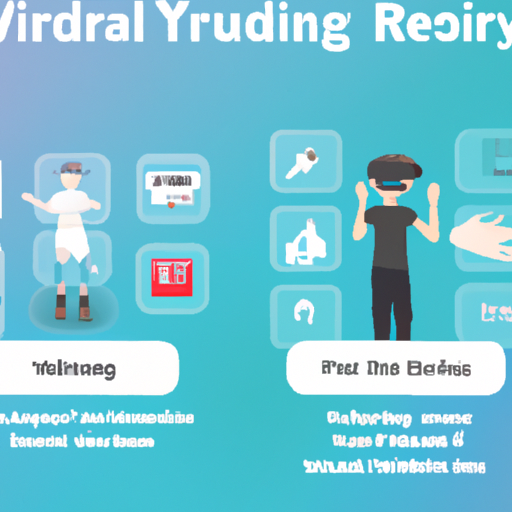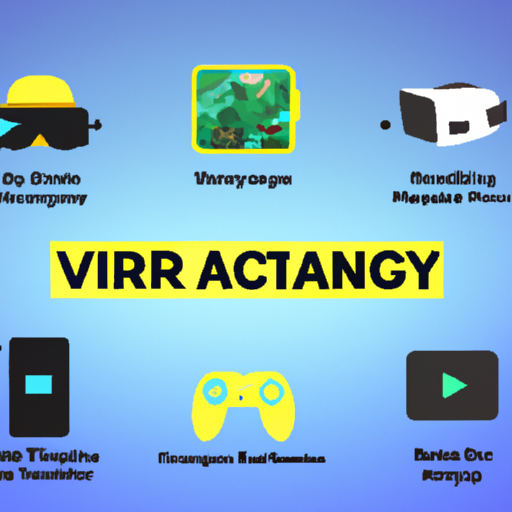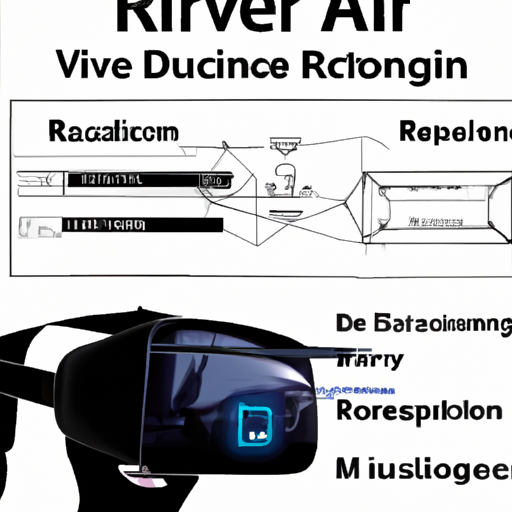-
Table of Contents
- Introduction
- The Impact of Virtual Reality and Augmented Reality on the Entertainment Industry
- The Future of Virtual Reality and Augmented Reality in Education
- The Benefits of Virtual Reality and Augmented Reality for Businesses
- How Virtual Reality and Augmented Reality are Changing the Way We Interact with Technology
- Exploring the Basics of Virtual Reality and Augmented Reality Technology
- Conclusion
“Unlock a New Reality with VR and AR Technology – Experience the Future Now!”
Introduction
Virtual Reality (VR) and Augmented Reality (AR) are two of the most exciting and rapidly growing technologies in the world today. VR and AR are both immersive technologies that allow users to interact with digital content in a simulated environment. VR creates a completely virtual world, while AR overlays digital content onto the real world. Both technologies have the potential to revolutionize the way we interact with the world around us. VR and AR work by using a combination of hardware and software to create a simulated environment. This includes headsets, controllers, and tracking systems that allow users to interact with the virtual world. The software then uses algorithms to create a realistic experience for the user. With the help of these technologies, users can explore virtual worlds, play games, and even create their own content.
The Impact of Virtual Reality and Augmented Reality on the Entertainment Industry
The entertainment industry has been revolutionized by the introduction of virtual reality (VR) and augmented reality (AR). These technologies have enabled the industry to create immersive experiences that were previously impossible. VR and AR have the potential to revolutionize the way people interact with entertainment, allowing them to become part of the story.
VR is a computer-generated simulation of a three-dimensional environment that can be interacted with in a seemingly real or physical way. It is typically experienced through a headset, which immerses the user in a virtual world. AR, on the other hand, is a technology that overlays digital content onto the real world. It is typically experienced through a smartphone or tablet, which allows users to interact with digital content in the physical world.
The entertainment industry has embraced these technologies, creating a variety of experiences for users. VR and AR have been used to create interactive video games, immersive movies, and interactive theme park rides. They have also been used to create virtual concerts, allowing users to experience live music from the comfort of their own homes. Additionally, these technologies have been used to create interactive museum exhibits, allowing users to explore history in a more engaging way.
The impact of VR and AR on the entertainment industry has been profound. These technologies have allowed the industry to create experiences that were previously impossible. They have also enabled the industry to reach new audiences, as these technologies are accessible to people of all ages and backgrounds. Furthermore, these technologies have allowed the industry to create more engaging experiences, as users are able to interact with the content in a more meaningful way.
In conclusion, VR and AR have had a significant impact on the entertainment industry. These technologies have enabled the industry to create immersive experiences that were previously impossible. They have also allowed the industry to reach new audiences and create more engaging experiences. As these technologies continue to evolve, it is likely that the entertainment industry will continue to benefit from their use.
The Future of Virtual Reality and Augmented Reality in Education
The use of virtual reality (VR) and augmented reality (AR) in education is becoming increasingly popular. These technologies have the potential to revolutionize the way students learn, allowing them to explore and interact with educational content in a more immersive and engaging way.
VR and AR can be used to create virtual learning environments that simulate real-world scenarios. For example, students can explore a virtual museum or take a virtual field trip to a historical site. This allows them to gain a deeper understanding of the material they are studying, as they can interact with the environment and gain a more immersive experience.
In addition, VR and AR can be used to create interactive learning experiences. For example, students can use VR headsets to explore a 3D model of a molecule or use AR to view a 3D model of a human body. This allows them to gain a better understanding of the material they are studying, as they can interact with the content in a more engaging way.
Furthermore, VR and AR can be used to create immersive educational games. For example, students can use VR to explore a virtual world and complete tasks to gain points or use AR to play educational games in the real world. This allows them to learn in a more engaging and entertaining way.
Finally, VR and AR can be used to create virtual classrooms. This allows students to attend classes from anywhere in the world, as they can join a virtual classroom and interact with their peers and teachers in real-time.
Overall, the use of VR and AR in education has the potential to revolutionize the way students learn. These technologies can be used to create immersive learning experiences that allow students to gain a deeper understanding of the material they are studying. As such, it is likely that the use of VR and AR in education will continue to grow in the future.
The Benefits of Virtual Reality and Augmented Reality for Businesses
The use of virtual reality (VR) and augmented reality (AR) technologies in business is becoming increasingly popular. These technologies offer a range of benefits to businesses, from improved customer engagement to increased efficiency and cost savings.
One of the primary benefits of VR and AR is improved customer engagement. By using these technologies, businesses can create immersive experiences that engage customers in a way that traditional methods cannot. For example, a furniture store could use VR to allow customers to virtually explore a room filled with furniture, allowing them to get a better sense of how the pieces would look in their own home. Similarly, AR can be used to provide customers with an interactive experience, such as allowing them to virtually try on clothes or accessories.
In addition to improved customer engagement, VR and AR can also help businesses increase efficiency and reduce costs. For example, VR can be used to simulate complex processes, such as manufacturing or assembly, allowing businesses to quickly identify and address any issues before they become costly problems. Similarly, AR can be used to provide workers with real-time information and instructions, reducing the need for costly training and allowing them to work more efficiently.
Finally, VR and AR can also be used to improve safety in the workplace. For example, VR can be used to simulate dangerous environments, allowing workers to practice safety protocols without putting themselves at risk. Similarly, AR can be used to provide workers with real-time safety information, such as the location of hazardous materials or the status of safety equipment.
In conclusion, VR and AR technologies offer a range of benefits to businesses, from improved customer engagement to increased efficiency and cost savings. By leveraging these technologies, businesses can create immersive experiences that engage customers, increase efficiency, reduce costs, and improve safety in the workplace.
How Virtual Reality and Augmented Reality are Changing the Way We Interact with Technology
The advent of virtual reality (VR) and augmented reality (AR) has revolutionized the way we interact with technology. These two technologies have enabled us to experience the world in a completely new way, allowing us to explore and interact with our environment in ways that were previously impossible.
VR is a computer-generated simulation of a three-dimensional environment that can be interacted with in a seemingly real or physical way. It is typically experienced through a headset, which immerses the user in a virtual world. AR, on the other hand, is a technology that overlays digital information onto the real world. It is typically experienced through a smartphone or tablet, which allows the user to view and interact with digital content in the physical world.
Both VR and AR have the potential to transform the way we interact with technology. For example, VR can be used to create immersive experiences that allow users to explore virtual worlds and interact with digital objects in a realistic way. AR can be used to provide contextual information about the physical world, such as directions, product information, and more.
VR and AR are also being used to create new ways of interacting with technology. For example, VR can be used to create virtual reality games that allow users to explore and interact with virtual environments in a more immersive way. AR can be used to create augmented reality apps that allow users to interact with digital content in the physical world.
In addition, VR and AR are being used to create new ways of learning. For example, VR can be used to create virtual classrooms that allow students to explore and interact with virtual environments in a more immersive way. AR can be used to create augmented reality apps that allow students to interact with digital content in the physical world.
Overall, VR and AR are changing the way we interact with technology. These technologies are enabling us to explore and interact with our environment in ways that were previously impossible. As these technologies continue to evolve, they will continue to revolutionize the way we interact with technology.
Exploring the Basics of Virtual Reality and Augmented Reality Technology
Virtual Reality (VR) and Augmented Reality (AR) are two of the most exciting and rapidly developing technologies of the 21st century. Both technologies have the potential to revolutionize the way we interact with the world around us.
Virtual Reality is a computer-generated simulation of a three-dimensional environment that can be interacted with in a seemingly real or physical way. It is typically experienced through a headset that is worn over the eyes and ears, and it can be used to create immersive experiences that are not possible in the real world. VR can be used for a variety of applications, including gaming, entertainment, education, and training.
Augmented Reality is a technology that overlays digital information onto the real world. It is typically experienced through a smartphone or tablet, and it can be used to enhance the user’s experience of the physical world. AR can be used for a variety of applications, including gaming, entertainment, education, and training.
Both VR and AR have the potential to revolutionize the way we interact with the world around us. They can be used to create immersive experiences that are not possible in the real world, and they can be used to enhance the user’s experience of the physical world.
The technology behind VR and AR is still in its early stages, but it is rapidly evolving. As the technology continues to develop, it is likely that these technologies will become more widely used and accepted.
It is important to note that both VR and AR have their own unique advantages and disadvantages. For example, VR can be used to create immersive experiences that are not possible in the real world, but it can also be disorienting and uncomfortable for some users. Similarly, AR can be used to enhance the user’s experience of the physical world, but it can also be distracting and intrusive.
Ultimately, VR and AR are two of the most exciting and rapidly developing technologies of the 21st century. As the technology continues to evolve, it is likely that these technologies will become more widely used and accepted.
Conclusion
VR and AR technology are powerful tools that can be used to create immersive and interactive experiences. They can be used to create virtual worlds, enhance existing physical environments, and provide a more engaging and interactive experience for users. VR and AR technology works by using a combination of hardware, software, and sensors to create a virtual environment that can be experienced by the user. By combining these technologies, users can experience a more realistic and engaging experience that can be used for a variety of applications.




